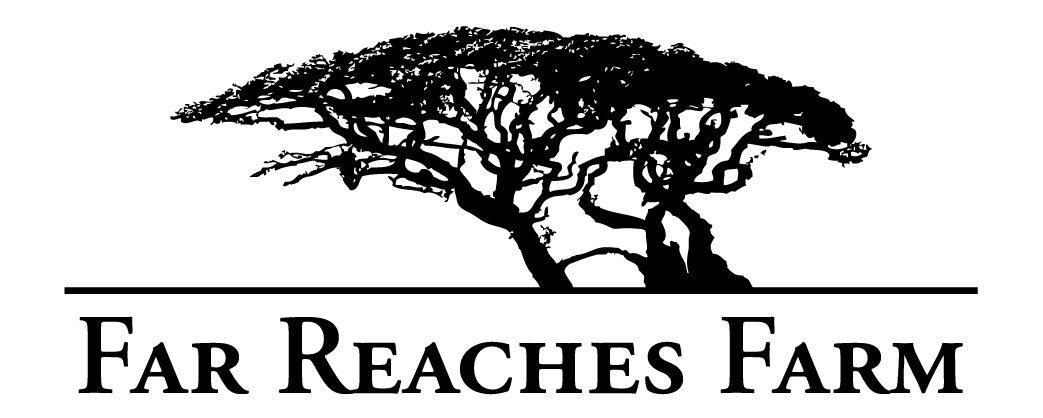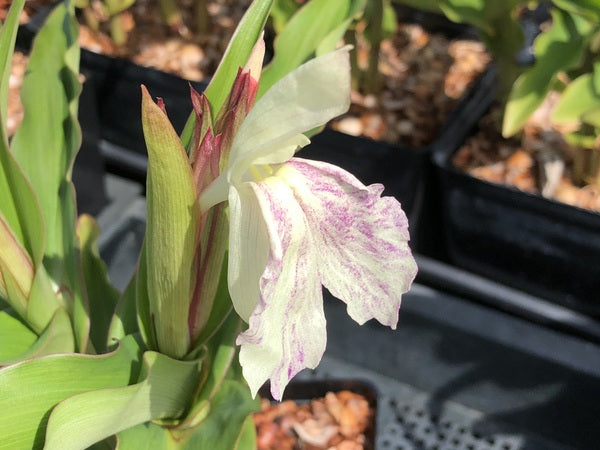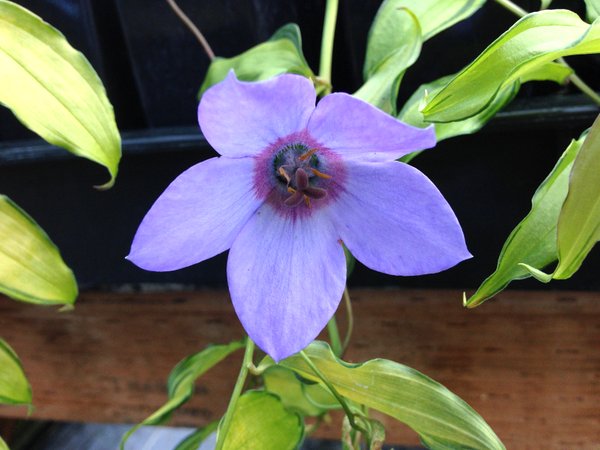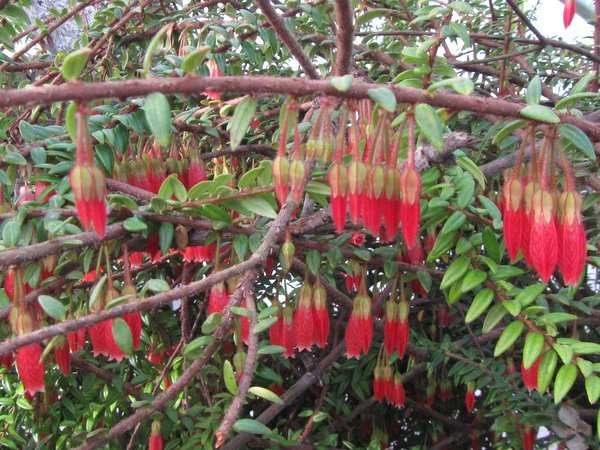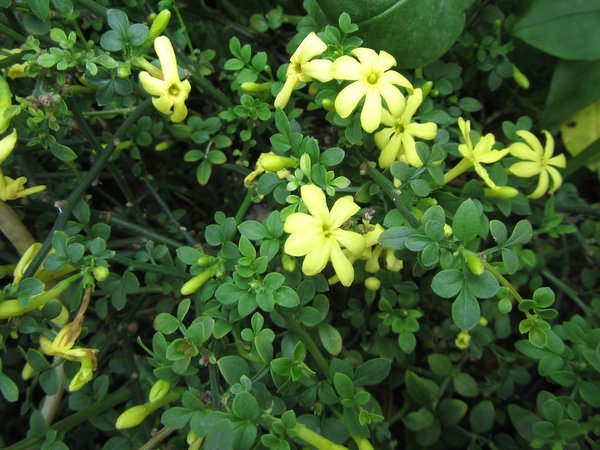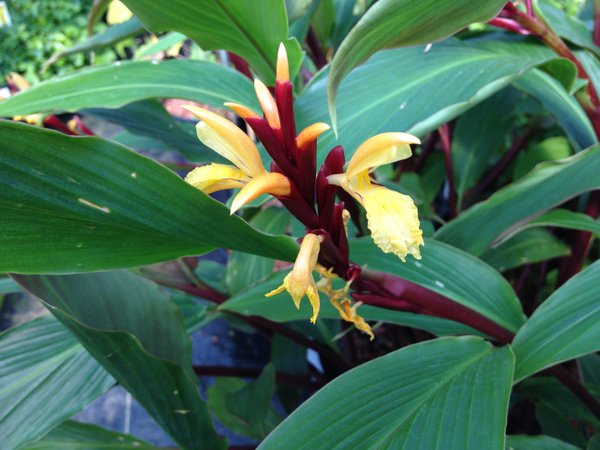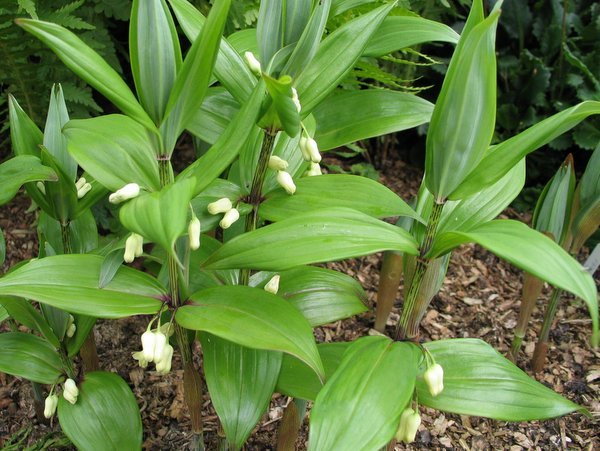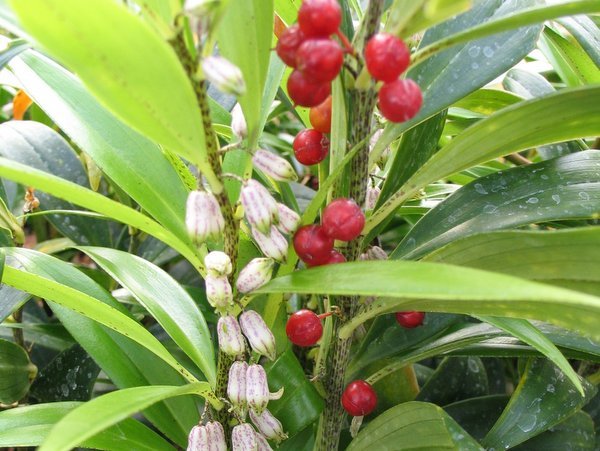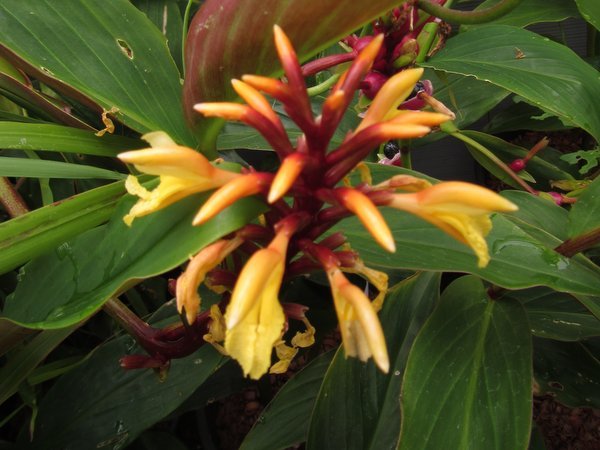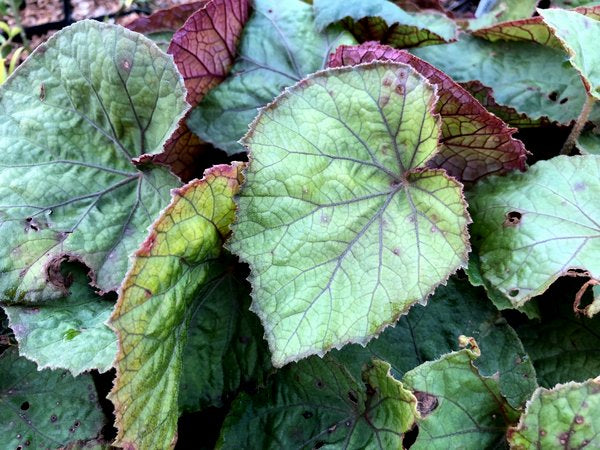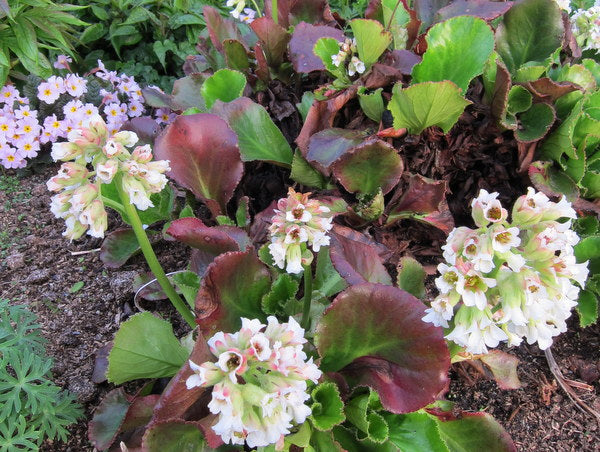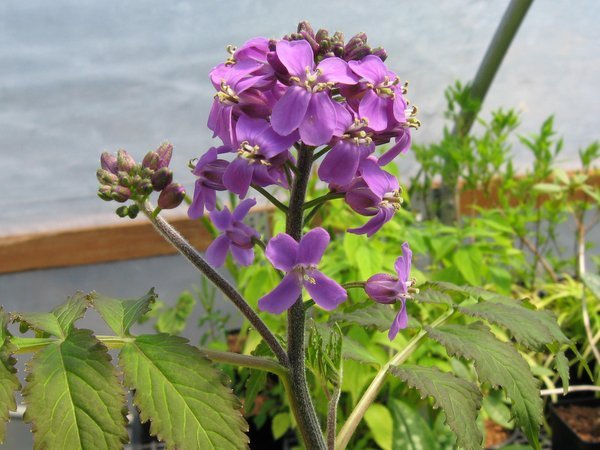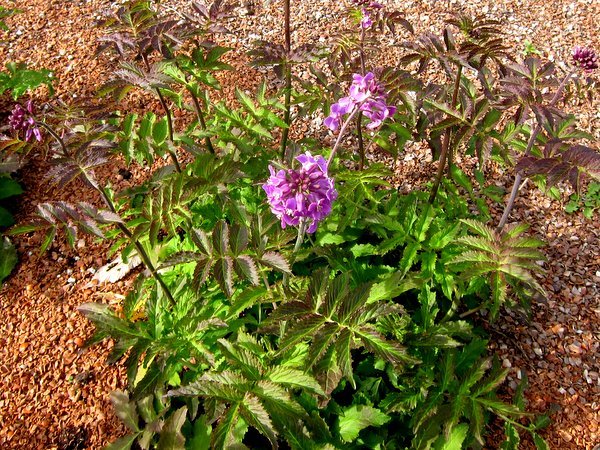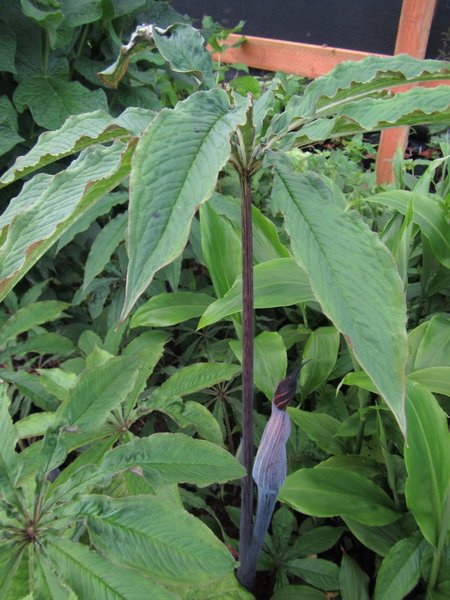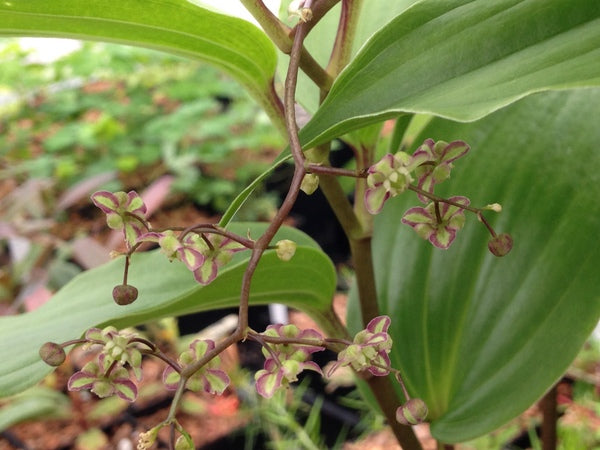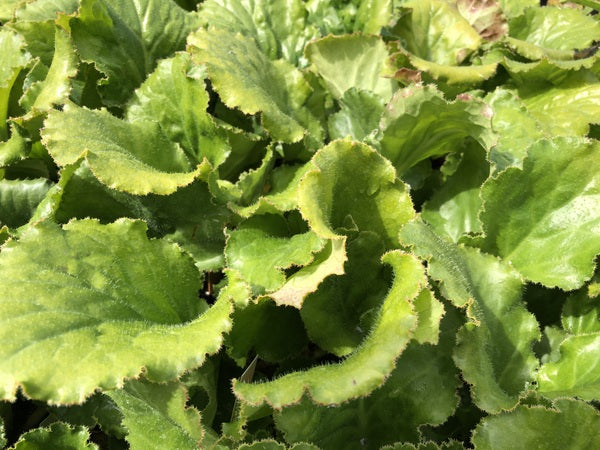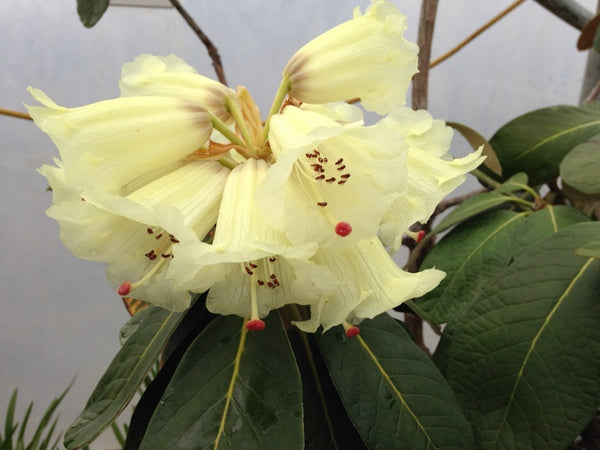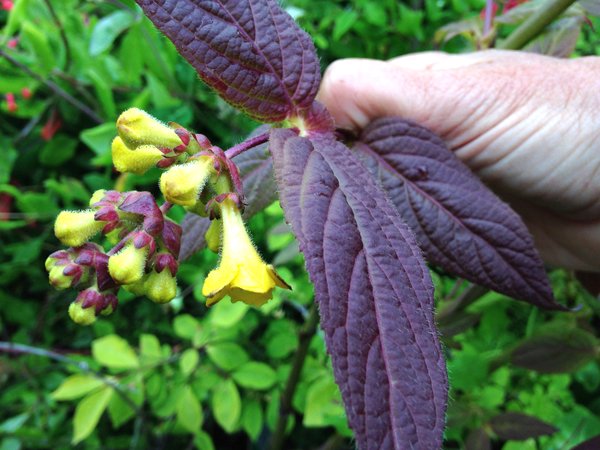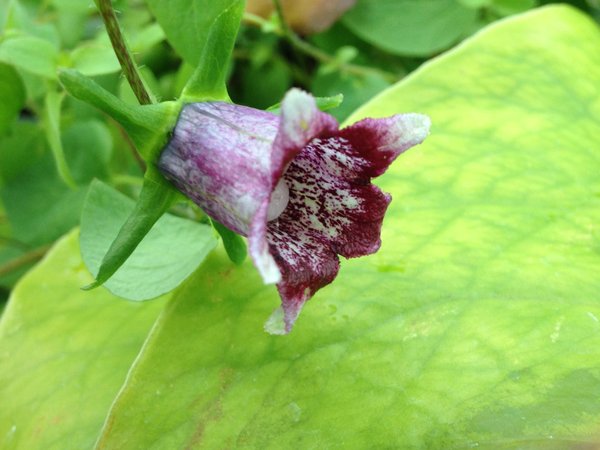Sort by:
92 products
92 products
One of the showiest in this genus of vining Bellflowers. Large purple-blue flowers with a dark ring - sometimes pure white - quickens our pulses in either expression. Recently reduced from species status, grey-wilsonii has been retained as a geographic race of the species convolvulacea based on larger leaves and flowers.
This flamboyant Blueberry relative is almost hardy in our area but is an easy and dramatic attention-getter in a pot. We keep ours in the cool greenhouse over winter or if you are annoyingly mild like West Seattle, just bring in during the rare hard freeze. The 1" red tubular flowers marked in distinctive pale chevrons are favored by our resident hummingbirds and we all snack on the lightly sweet pale lavender fruit. This is an epiphytic species from the foothills of the Himalaya with arching pendulous stems clad in small evergreen leaves. We sold our nearly 30 year old stock plant as there are offers that you can't refuse but we still pine and wonder how our priorities became so skewed. But we took cuttings and so on it goes.
Hardy dwarf Jasmine from Himachal Pradesh in India. This is an ideal little rock garden candidate or if you are looking for a small shrub for that special nook, look no further. Small yellow flowers lightly scented are scattered among the evergreen leaves all summer. Tolerant of dry, deer aren't interested, no maintenance needed.
A collection from Nepal deemed distinct by Crug Farm Plants in Wales. From terminal bud cones in mid to late summer, yellow-orange flowers spout from prominent red bracts. The foliage is red-tinged underneath and is held on dark stems. Clumps nicely and the species as a whole is of elegant presentation. Moist, rich and mulch if winter is cold.
One of our favorites, this came to us years ago from Washfield Nursery in England as Polygonatum geminiflorum but according to Polygonatum expert Aaron Floden, this does not match recent collections of Polygonatum geminiflorum by Ron McBeath and our plant and is actually P. singalilense. This species hails from the Singalila Ridge area which runs from Nepal west and north to the Darjeeling area and up into Sikkim. This slowly but steadily makes a nice clump with the leaves arranged in whorls which are wider than typical for the more familiar whorled species. The subtle bit of elegance that sends us is the small maroon shading at the leaf axil. It sounds silly but style is so often in the accessories.
Rare in cultivation, this form from NW India of this Solomon's Seal is mainly an epiphytic species growing in mossy trees and on mossy, humus covered rocks. The speckled pale pink flowers hang as small bells as the new growth elongates and as the season progresses, the flowers turn into attractive red fruits. In frost-free areas, the fruit-bearing stems overwinter and overlap the flowering of the next year's growth which is very charming. This is an evergreen species in mild areas and is some years for us but of late has been deciduous due to cold winters with no ill effects. It has done very well in our raised shade beds and this is another plant we mulch in the fall as a winter precaution. Good drainage.
A Hinkley collection of this rhizomatous Begonia from 9500' in the far eastern Himalaya. Attractive foliage with red hues and veins underleaf and we presume, pink flowers. Hardiness is unknown but we would mulch it well in zone 8 gardens. Ideally, overwinter frost-free until large enough to divide off a piece for trial outside in your garden. This would be a trial lamb.
A Chadwell collection from the Himalaya which we've grown for over two decades. This species is found at higher elevations than B. pacumbis which shares the same range. The green leaves are not uncomfortably large but pleasantly average. (I've said this before - seems familiar somehow....) White flowers.
Named for the stringently impeccable plantswoman and designer, this large-leafed deciduous Bergenia with pink-white flowers is a worthy namesake. She had a deserved reputation of not brooking fools gladly but strangely was always pleased to see us - perhaps a case of the exception proving the rule. Light green leaves with crenulate dentation on the scalloped leaves.
Our own F2 hand-pollinated seedlings from this superb big leaf species which has shown more hardiness than the Kingdon-Ward collections from 70 years ago. This collection has handled 10F here in our garden with aplomb. Early spring trusses of big yellow flowers although interestingly, one of the original wild seedlings flowered white. Best in a sheltered position out of the wind and sun where the foliage can hit its max potential. These are sturdy youngsters. An amazing experience to see this species in the wild.
Yellow Himalayan Honeysuckle. A species from NE India and northern Myanmar originally introduced by Frank Kingdon-Ward just over 100 years ago, this is from a more recent US Natiional Arboretum collection. Yellow flowers over bronzed foliage distinguishes this from the more familiar Leycesteria formosa.
Rare Campanula relative from Bhutan, Nepal and Tibet. This has a perennial carrot-like root and in mid spring, the new growth emerges getting 12"-18" tall and tipped by pale blue bells with a darker blue base. We collect Codonopsis every time we see them in Asia because we love them. Musky foliage if bruised.
Cool member of the true Ginger family, this has torches of soft yellow flowers held above the corn-like foliage. Blooms reliably here unlike a lot of it's kin and we see flowers in July to August in our shade garden. Adds an easy tropical look. This is sometimes seen offered as C. lutea and C. gracilis. Rich soil that stays moist but isn't mucky or waterlogged. Likes a looser. airy soil and best to mulch in fall. A very easy plant which will self-sow when happy which in turn makes us happy.
Our collection of this triumphant Asian species which occurs in the Sino-Himalaya and is such a delight in the garden. This collection is from an adjacent area to the CGG14112 collection also listed and we expect these to be of similar high caliber when they reach flowering size. Rich, moist soil and plant shallow.
